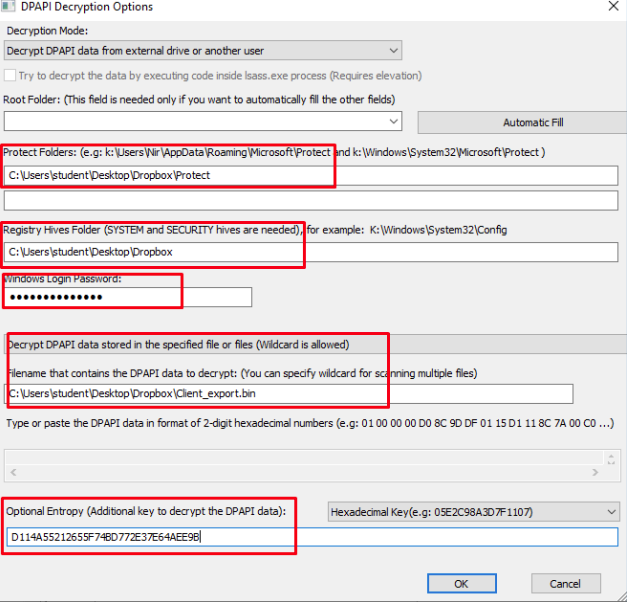Local Cloud Storage
[AD REMOVED]
OneDrive
In Windows, you can find the OneDrive folder in \Users\<username>\AppData\Local\Microsoft\OneDrive. And inside logs\Personal it's possible to find the file SyncDiagnostics.log which contains some interesting data regarding the synchronized files:
- Size in bytes
- Creation date
- Modification date
- Number of files in the cloud
- Number of files in the folder
- CID: Unique ID of the OneDrive user
- Report generation time
- Size of the HD of the OS
Once you have found the CID it's recommended to search files containing this ID. You may be able to find files with the name: \
Google Drive
In Windows, you can find the main Google Drive folder in \Users\<username>\AppData\Local\Google\Drive\user_default\
This folder contains a file called Sync_log.log with information like the email address of the account, filenames, timestamps, MD5 hashes of the files, etc. Even deleted files appear in that log file with its corresponding MD5.
The file Cloud_graph\Cloud_graph.db is a sqlite database which contains the table cloud_graph_entry. In this table you can find the name of the synchronized files, modified time, size, and the MD5 checksum of the files.
The table data of the database Sync_config.db contains the email address of the account, the path of the shared folders and the Google Drive version.
Dropbox
Dropbox uses SQLite databases to manage the files. In this\ You can find the databases in the folders:
\Users\<username>\AppData\Local\Dropbox\Users\<username>\AppData\Local\Dropbox\Instance1\Users\<username>\AppData\Roaming\Dropbox
And the main databases are:
- Sigstore.dbx
- Filecache.dbx
- Deleted.dbx
- Config.dbx
The ".dbx" extension means that the databases are encrypted. Dropbox uses DPAPI (https://docs.microsoft.com/en-us/previous-versions/ms995355(v=msdn.10)?redirectedfrom=MSDN)
To understand better the encryption that Dropbox uses you can read https://blog.digital-forensics.it/2017/04/brush-up-on-dropbox-dbx-decryption.html.
However, the main information is:
- Entropy: d114a55212655f74bd772e37e64aee9b
- Salt: 0D638C092E8B82FC452883F95F355B8E
- Algorithm: PBKDF2
- Iterations: 1066
Apart from that information, to decrypt the databases you still need:
- The encrypted DPAPI key: You can find it in the registry inside
NTUSER.DAT\Software\Dropbox\ks\client(export this data as binary) - The
SYSTEMandSECURITYhives - The DPAPI master keys: Which can be found in
\Users\<username>\AppData\Roaming\Microsoft\Protect - The username and password of the Windows user
Then you can use the tool DataProtectionDecryptor:

If everything goes as expected, the tool will indicate the primary key that you need to use to recover the original one. To recover the original one, just use this cyber_chef receipt putting the primary key as the "passphrase" inside the receipt.
The resulting hex is the final key used to encrypt the databases which can be decrypted with:
sqlite -k <Obtained Key> config.dbx ".backup config.db" #This decompress the config.dbx and creates a clear text backup in config.db
The config.dbx database contains:
- Email: The email of the user
- usernamedisplayname: The name of the user
- dropbox_path: Path where the dropbox folder is located
- Host_id: Hash used to authenticate to the cloud. This can only be revoked from the web.
- Root_ns: User identifier
The filecache.db database contains information about all the files and folders synchronized with Dropbox. The table File_journal is the one with more useful information:
- Server_path: Path where the file is located inside the server (this path is preceded by the
host_idof the client). - local_sjid: Version of the file
- local_mtime: Modification date
- local_ctime: Creation date
Other tables inside this database contain more interesting information:
- block_cache: hash of all the files and folders of Dropbox
- block_ref: Related the hash ID of the table
block_cachewith the file ID in the tablefile_journal - mount_table: Share folders of dropbox
- deleted_fields: Dropbox deleted files
- date_added
[AD REMOVED]